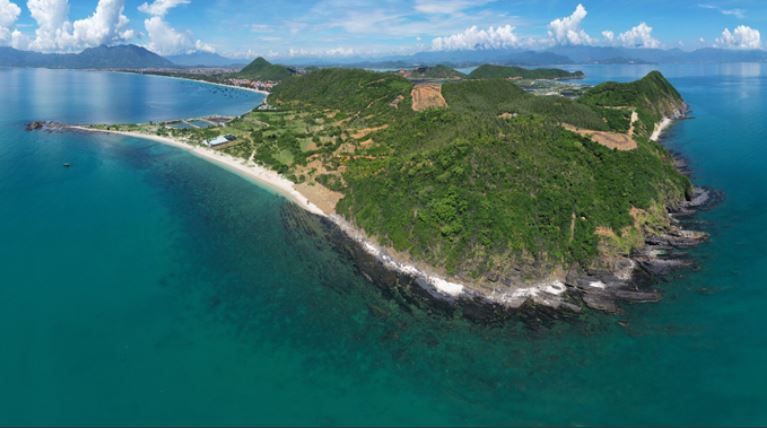The research on landscape values, geology and geomorphology in the area of Du Cape - Cam Mountain (Ninh Hai Ward, Ninh Hoa Town, Khanh Hoa Province) has just been examined and approved. The research team and acceptance council agreed to propose that the site which has many unique values in terms of landscape, geology, geomorphology and biological resources be a provincial natural heritage for suitable protection and exploitation.
Unique landscape, geology and biodiversity
According to M.A Pham Ba Trung (Institute of Oceanography), the director of the research, the values of landscape, geology and biological resources need to be identified and evaluated. The proposal is to bring economic, social, cultural and educational benefits, so the province has requested relevant departments and agencies to consider implementing this project.
“From December 2021 to October 2023, we have coordinated with many local agencies and departments to conduct field surveys in this area many times for geological and geomorphological study; seabed topography measurement, collection of sediment samples and resources; assessment of the current status of intertidal ecosystems, coral reefs, seaweed and biodiversity resources," said M.A Pham Ba Trung.
 |
| Du Cape - Cam Mountain area. |
The researchers drew geological, geomorphological and heritage maps based on regulations of the Ministry of Natural Resources and Environment; used geological and geomorphological methods to collect sedimentary rock samples; analyzed samples in the laboratory; evaluated in detail the current status of coral reef biodiversity, coral reef fish, large invertebrates, etc.
After more than 22 months of research (from December 2021 to October 2023), the researchers discovered unique geological and geomorphological values in the Du Cape - Cam Mountain coastal area. The geology and geomorphology of the coast are eroded by ocean waves. In this area are mainly sedimentary rocks which are formed into rocky protrusions, sedimentary cliffs, etc. There are 2 beaches and marine terraces.
Especially, the research team discovered Ammonite fossils and fossil wood believed to date back to the Early - Middle Jurassic period, about 174.1 – 182.7 million years ago. The research on biological resources of coral reef ecosystems has identified 61 species, 28 varieties, 13 families of hard corals; 3 varieties of soft corals, 98 species belonging to 53 genera and 30 families of coral reef fish and 33 groups of benthic species.
Live coral cover accounts for more than 50% of the bottom cover, of which soft corals predominate, from 24 to 38%; hard corals account for 12-20%. The average density of coral reef fish is quite high at nearly 320 individuals/100m2.
54 seaweed species were identified; Of which 8 species have economic value, 2 are listed as endangered and rare species, including Halymenia dilatata and Halymenia maculata. Besides, the project also identified the rocky intertidal ecosystem and seabed ecosystem.
Tourism development potentials
According to M.A Trung, the value of the landscape, geology, geomorphology and biological resources of the Du Cape - Cam Mountain area is very unique. The presence of 3 folds and fossils, especially Ammonite, identified to have dated to hundreds of millions of years old has drawn the attention of visitors.
According to Dr. Ngo Tuan Tu, Vice-Chairman of Vietnam Association of Hydrogeology, Chairman of the Acceptance Council, with unique and rare landscape, geology, geomorphology, and resource values, this area is worth being developed as a tourist destination associated with the protection of natural landscape and natural heritage. On that basis, an outdoor geological museum combined with tourism, education, research and sightseeing activities can be established.
The council agreed to propose to the Provincial People's Committee to consider the area as a provincial-level natural heritage to promote its potential and strengths of landscape and geology together with planning adjustments needed to prohibit illegal exploitation to protect this unique heritage in the province.
V.L
Translated by N.T











Thông tin bạn đọc
Đóng Lưu thông tin